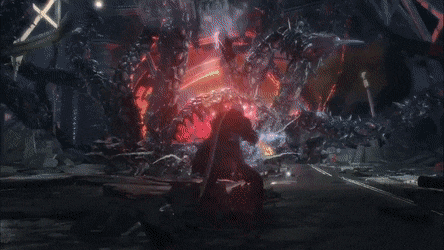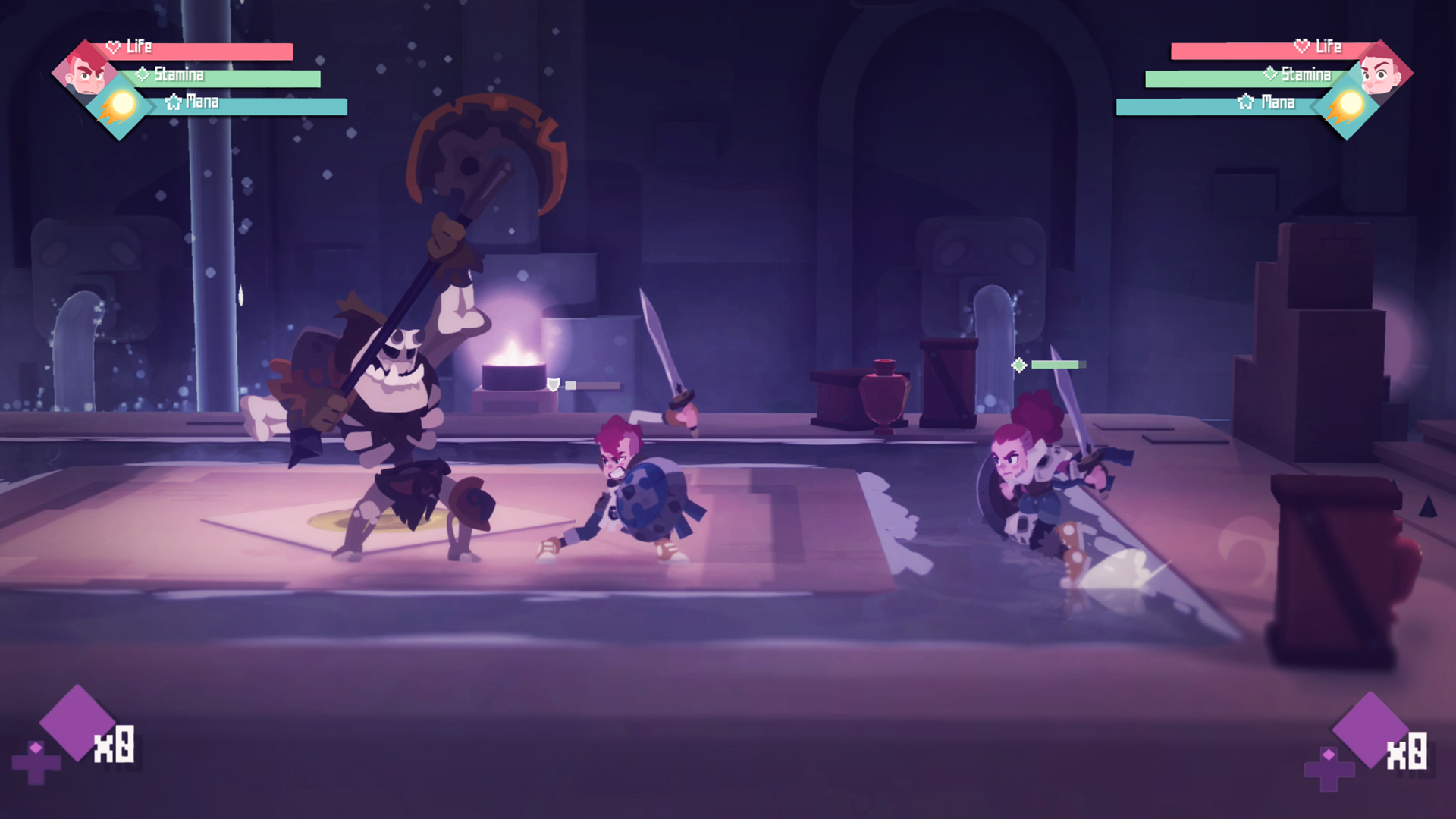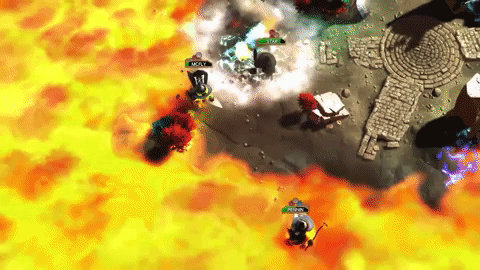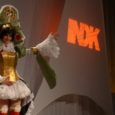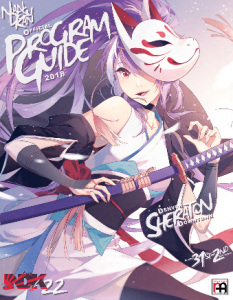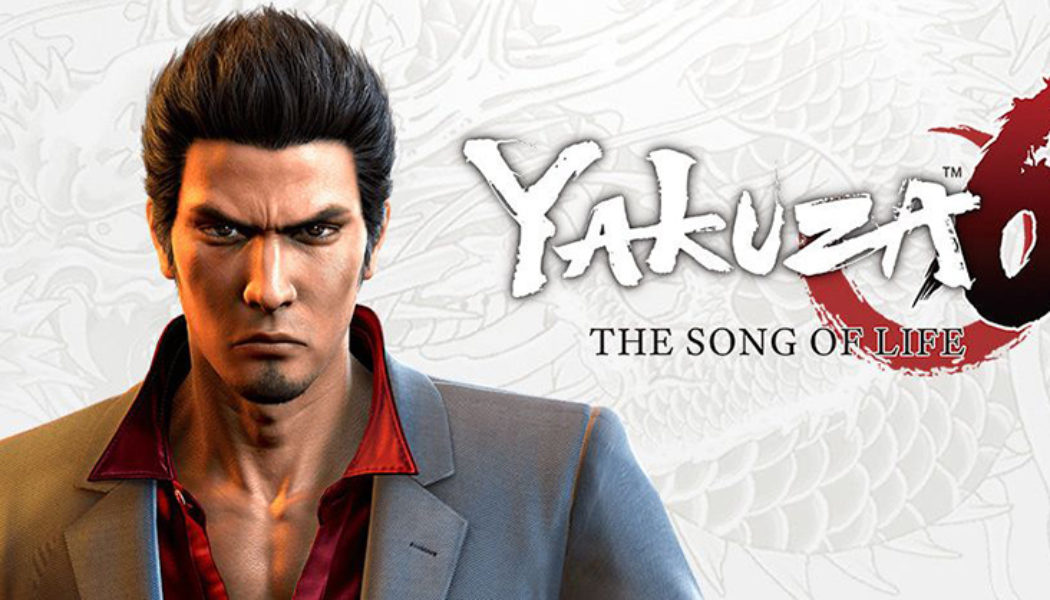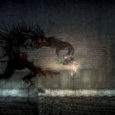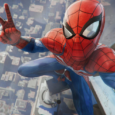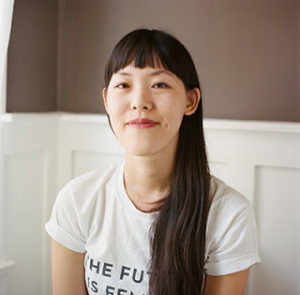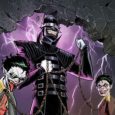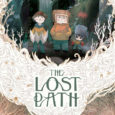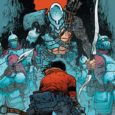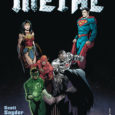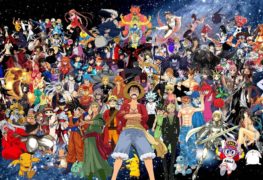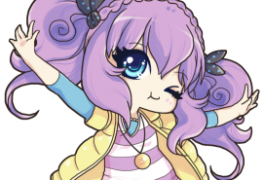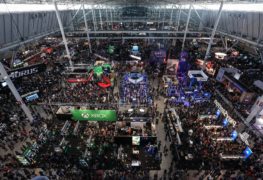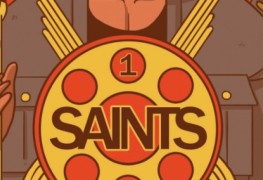Devil May Cry 5
Ready for more of the stylish hack-n-slash action game that continues to captivate? Dante’s back again trying to track down the source of a rash of attacks after being hired by the mysterious “V”. Nero is also back, working out of a mobile Devil May Cry agency housed in a dope van. The game brings back its kinetic gun/sword gameplay style with the added wrinkle of being able to use different Devil Breaker abilities with Nero’s robotic arm. These strong attacks are limited, but you can refill from items you find along the way. It’s an interesting addition since there’s a sort of economy for how desperate you are to use these strong attacks. And of course the huge boss fights are back. The demo of Devil May Cry 5 has you fighting a Goliath and has very Devil May Cry entry sequence. Fans of the series should look forward to the latest entry in the series.
You can catch Devil May Cry 5 this March 8th on PC, PS4, and Xbox One.
Please enter the url to a YouTube video.Young Souls
Young Souls is the story of two teenagers abandoned by their parents. Not only do they feel outcast by their parents, but the townsfolk in their new home aren’t exactly welcoming. As long as they have each other though, everything should be fine. That is, of course, until they find a portal to another world and are the only ones who can save Earth. The game is a classic sidescroller beat-em-up where you start at the beginning of an area and beat enough bad guys to get to the treasure at the end. You can upgrade your gear with loot you find in each dungeon. The most remarkable thing about the game are the graphics — hand drawn 2D graphics and animations in a simple, but strong art style. It’s an absolute treat to look at. The gameplay is simple, but engaging and the only issues so far are lag spikes when in hectic combat. It’s not the greatest experience to try and pull off an attack, have the screen freeze for half a second, then be on the ground afterward. That being said, there’s not a release date for the game yet, so there’s still plenty of time to iron out the bugs. If you liked the Scott Pilgrim game or any classic beat-em-up, you’ll definitely love Young Souls.
Please enter the url to a YouTube video.
Magequit
Magequit is an arena brawler in which you and up to 9 of your friends face off as wizards trying to grow their beards the longest by eliminating competing wizards. Each round, wizards gain a new spell to use against their foes until every button has a spell mapped. When gaining a new spell, the wizard with the smallest beard gets to choose first, which has a rubberbanding effect, not allowing any player to get too far behind and have no hopes of catching up. The movement of the wizards is also relatively slow, adding tension and anxiousness to each match.
Magequit is a wonderful party game to add to any library, so much so that you should consider picking it up even if it’s just in early access right now.
Please enter the url to a YouTube video.Check out more of our coverage from PAX South 2019 or find additional convention coverage! Let us know what you think on Facebook or Twitter @SubCultured, and join in the conversation on our Discord channel!
Jump Force, Skellboy, A Fold Apart
Splitgate Arena Warfare, World of Horror, JackQuest, and Disjunction
Nan Desu Kan 2018 is drawing nearer, and Sub Cultured will once again be there keeping you up to date with the latest news from one of the biggest anime conventions in Denver, Colorado!
Since Nan Desu Kan is local to a few of us here at Sub Cultured, we try and make our presence known there every year. Check out out coverage from NDK 2016, and peruse all the pictures of the fantastic cosplay from the costume contests of Nan Desu Kan 2016 and Nan Desu Kan 2017!
Held at the Denver Sheraton Downtown hotel this weekend, August 31st through September 2nd, 2018, the theme of this year’s convention is Mascot Masquerade. In its now 22nd year, Nan Desu Kan 2018 boasts all of the staples that make an anime convention a stand-out, plus new additions to sweeten the experience!
With new photo shoot areas marked specifically for photographers and staff of NDK photographers wandering the convention floor, cosplayers should be on the look out for the bright vests and badges of NDK Staff! Be sure to ensure your cosplay, props, and access badge are all up to code by checking up on the Rules and Policies that are detailed on their website and in the program. There are no strange or out of the ordinary rules, as convention organizers are setting up a fun event, in a fun location, and that is paramount!
Beyond the huge expo hall full of Artists, prints, and goodies galore, Nan Desu Kan has also focused on upping the gaming presence for 2018. Nan Desu Kan has doubled the size of the gaming area, located on the 2nd floor of the Tower Building.
Gaming not your style? Nan Desu Kan’s wall-to-wall programming and panels this year also have a lot of really interesting topics. Notable events include Q&A’s with voice actors, cosplay round tables, debates and more! For more details, check out the Nan Desu Kan 2018 program linked below. Be sure to make note of panels you want to attend beforehand!
Looking for more than panels and prints? There is plenty of after hours programming going on during Nan Desu Kan After Dark! On Friday night, be sure to stop by the 18+ burlesque show, Talk Nerdy to Me, or the J-Pop Dance! And on Saturday, don’t forget to grab your best mask and head over to the Masquerave or learn how to take cosplay selfies with HeatherAfter Cosplay.
Nan Desu Kan 2018 will be held August 31st – September 2nd and takes place at the Denver Sheraton Downtown, which is conveniently located in the heart of Denver, Colorado. Our team from Sub Cultured will be at the convention first thing Saturday, and we will be staying on location for the entirety of the weekend. We hope to see a bunch of you there, and for those who cannot make it we will take pictures of as many costumes and moments as we can, and share them throughout the week following the event.
Tickets are still available online, so come soak up some of the panels and programming, and be sure to say hi! Follow us on Twitter @SubCultured and Facebook for updates from the show floor or keep an eye on our convention coverage, and be sure to check back for our Nan Desu Kan 2018 recap and cosplay gallery!
Want to keep the conversation going? Let us know what you want to hear by joining our Discord server, following us on Facebook, or tweet to us @SubCultured! Join us on our Twitch channel every Monday, Wednesday, and Friday at 9PM CST! You can also support our efforts by donating or get monthly perks becoming a patron on Patreon!
The Yakuza series started back in 2006 for all of us here in the West. Twelve years later, the game is putting out its sixth numbered entry and wrapping up the entire Kazuma Kiryu saga. The legacy of this series is steeping in memorable characters and most importantly, good storytelling. Yakuza 6 takes twelve years of lessons learned and combines them into one ultimate package, creating an outstanding finale.
Yakuza has been at the forefront a lot over these last couple of years. With the series prequel Yakuza 0 and the Kiwami remakes of 1 and 2, it’s an excellent time to get into the series. Even if you refuse to put in the numerous hours it would take to complete the whole series, newcomers will find themselves very informed with the characters and world of Yakuza. Thanks to the assortment of flashbacks, previous game synopsis via the game menu, set ups, meet and greets and what-have-yous, the game will do everything it can to keep new players up to date with the story as a whole. Now of course if you are a returning fan you will get a much more elevated experience, having intimate knowledge of the previous games. Don’t let the number fool you though, this is a fine place to start up your adventure with Kazuma Kiryu.
Strap in for long, dialog heavy cutscenes. Every few steps you make, and every bit of progress is bookended by lots and lots of exposition. Not that we’re complaining! Newcomers might be thrown off a bit but longtime fans will feel right at home. Think Metal Gear Solid length cutscenes here – the kind where it’s just better to put down the controller and enjoy the show while you get wrapped up in the game’s incredible narrative. Familiar faces will pop up, and while not every cast member gets big moments, I never felt cheapened by the omission or lack of some of my favorite supporting characters from previous games. Story and characters are always at the forefront of this series, and The Song of Life is no different. The focus on narrative may feel slow to some, especially in the early hours of the game, but there is a lot to set up and explain before the real meat of the adventure begins. Those excited to put a hurt on people, will need to practice a bit of patience as they work their way into some of the more consistent action.
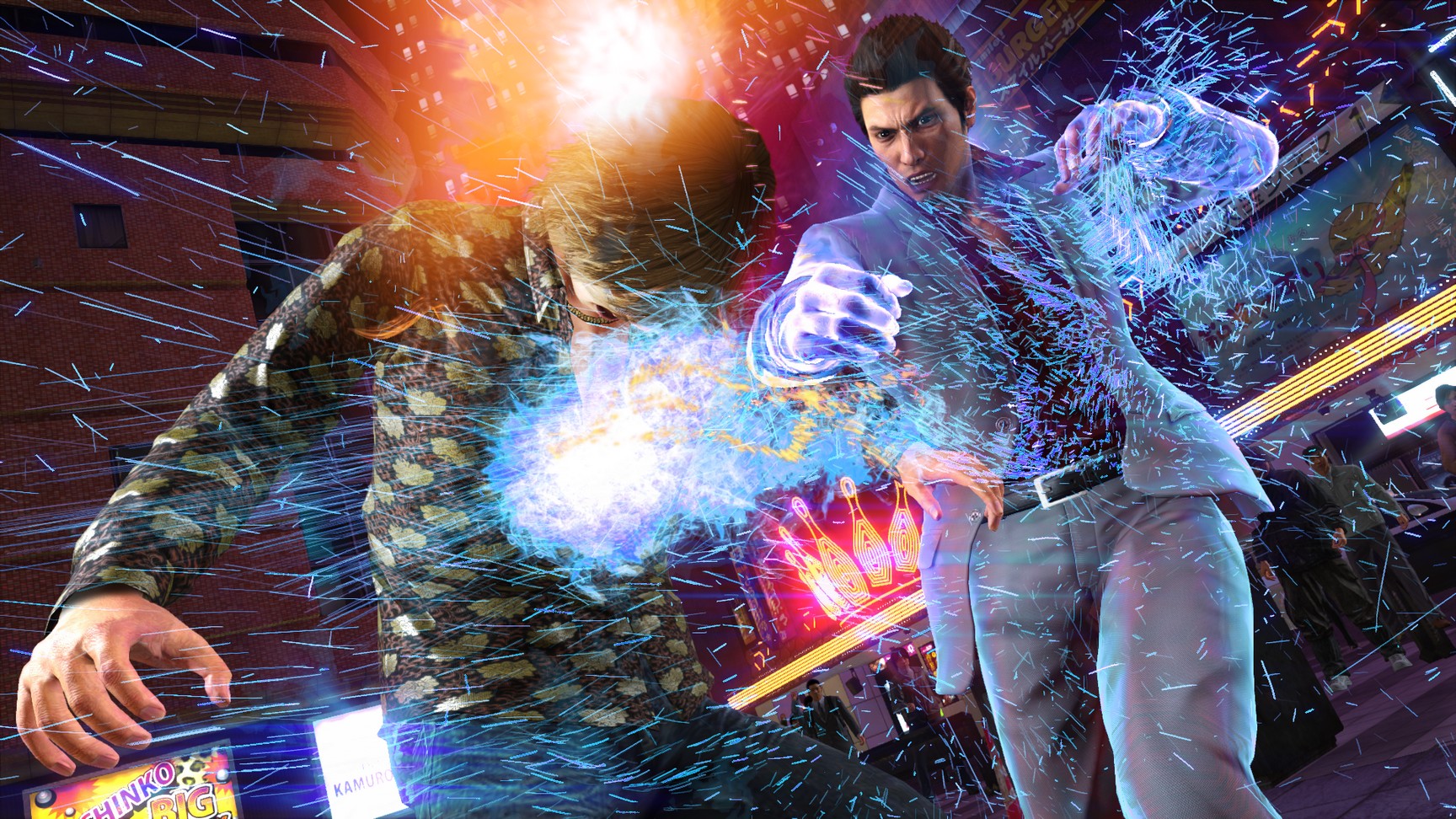
Graphics are obviously the best they have ever been in Yakuza 6. Sure, it might fall just short of other open world games from this generation, but the character models are a real standout. Even patrolling around the city at night can be a great visual feast, as the neon signs of Kamurocho reflect off the streets. Character animations are good as well, as a nice natural feeling is given off as character talk, walk, converse, and interact with one another.
Coming back to the city of Kamurocho is always a treat since we’ve been stomping around on these grounds for 12 years now. While reusing locations and assets are considered negatives in most games, in Yakuza 6 this works and is most welcomed. Kamurocho is Kiryu’s home, so the familiarity the city brings works well with player immersion. The passing of time has changed Kamurocho in many ways. Sure buildings may be where they used to be, but new shop locations keep the player exploring as things are as modern as ever. Playing Yakuza 0 and playing Yakuza 6 offers two very different versions of Kamurocho, despite it being the same city, and is a true example of how time morphs all things.
Modernizing everything as time passes is a theme in the Yakuza story, mechanics, and aesthetic. Gone are the scattered phone booths and in turn, the archaic saving system that goes along with it. Now you’ve gotten with the times and have a cell phone with a generous autosave system. This really streamlines the game as when you are winding down with your playthrough, you don’t need to worry about how close a save point is. The save point is always in your pocket for you to manually save or the autosave feature will kick in upon almost every time hitting the “start” button.
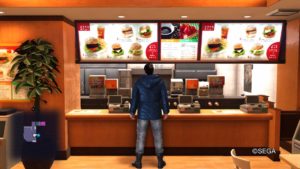
Eating and drinking are as important as ever now. These mechanics have always been in previous games, but now it’s a big way to get experience points. Pairing multiple combinations of things on the menu will give you increased boosts of experience. A lot of my money went to spending on food, and finding the right combos was fun, as I monitored my hunger meter. You don’t ever starve or go hungry and the game does not require you to eat, but there it is much fun to be had by going into new restaurants, seeing what they serve, and trying to get the most out of your money. To deplete your hunger meter, you just need to run around and fight. It is pretty easy to nab a meal after every encounter, thus maximizing your experience gained.
Experience can be used in five different categories, with each category unlocking new skills and permanent buffs. Choosing how to shape your character and what to spend points on is up to you, but don’t be surprised if you have everything unlocked after your run time of the game. You also have control over a few item slots. As you buy and pick up wearable items, you can equip them to further increase specific stats. I found changing things around in my inventory made some fights much easier. Don’t worry too much about it though, because the difficulty, like other Yakuza games, is very low.
Substories are back, and in plentiful amount. The Yakuza series has always done a great job at committing to a balancing act of extreme goofiness along with the drama of a real soap opera starring hardened gangsters. One moment you are fulfilling a mission that has some emotional payoff, the next you are fighting ghost pirates in a cemetery. It’s all very surreal. It has to be a hard line to walk because I never feel like my immersion breaks while doing some of the more sillier tasks. Everything feels like it belongs in this world.
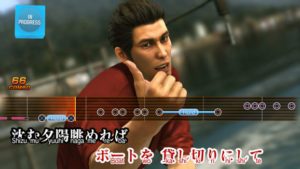 There are so many other side activates to do as well that will distract you from the main adventure. Karaoke is back, going to a cat café, visiting shrines, having a drink with friends, shark hunting/fishing, and of course, working out at the gym, putting a baby in a good mood, are some of the things you will find throughout the world. The main plot may be the priority but you always have time for a small detour in one of these many side attractions.
There are so many other side activates to do as well that will distract you from the main adventure. Karaoke is back, going to a cat café, visiting shrines, having a drink with friends, shark hunting/fishing, and of course, working out at the gym, putting a baby in a good mood, are some of the things you will find throughout the world. The main plot may be the priority but you always have time for a small detour in one of these many side attractions.
We also get a gang creator. You will be recruiting and locating an assortment of gang members to join you in a new mini game. It functions like a tower defense game in that you are populating troops by expending points that you gain from actions or over time. It is a good time waster but it is not the most engaging mini game in the Yakuza series. Leveling up troops was simple but fun. I still found myself wasting a few hours with it, so something about it kept keeping me coming back! Watching your troops level up, and putting them in the right chain of command was rewarding. I will say that there was one other mini game I found that was just outright strange. There are online chat rooms with babes to fake talk to, and these mini games are awkward and weird. You spend time doing button prompts (quick time events) while talking to a real (live actor) lady who may or may not be stripping. Thanks Japan!
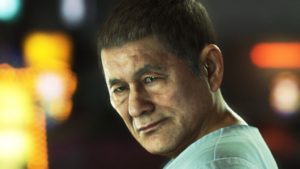 One of the biggest takeaway for me was the inclusion of actor, director, and icon, Beat Takeshi. You may know Takeshi Kitano from other Yakuza films or TV (unrelated to this game). His major works are: starring in Battle Royale, and directing the movie Brother, among many others. Beat Takeshi offers a very memorable character in the game’s narrative, and every time he came on screen it made me forget I was playing a game, and trick me into thinking this is one of his MANY Yakuza movies.
One of the biggest takeaway for me was the inclusion of actor, director, and icon, Beat Takeshi. You may know Takeshi Kitano from other Yakuza films or TV (unrelated to this game). His major works are: starring in Battle Royale, and directing the movie Brother, among many others. Beat Takeshi offers a very memorable character in the game’s narrative, and every time he came on screen it made me forget I was playing a game, and trick me into thinking this is one of his MANY Yakuza movies.
The story in Yakuza 6 The Song of Life here revolves around one of Kiryu’s children going missing. Kiryu oversees an orphanage in which he is responsible for many kids. The narrative begins with one of the children leaving the orphanage and losing contact. Kiryu, hot off of being in jail, must track her down. This leads him back to a Kamurocho which is now overran by Triad who are going to war with the local Yakuza. These events drag Kiryu back into his old life, and guides him towards a new location, Onomichi in Hiroshima. This somewhat simple mystery turns into a complex narrative with an third act that pays off in some very big ways. Longtime fans of the series will get one of the best endings any game series has ever had, and leave you fulfilled in every way. Few games in the industry can claim such a feat.
The overarching themes of fathers and son, and what parents are willing to do for their children as well as what children are willing to do to gain acceptance and approval from their parents, are powerful and meaningful. These themes give the game’s narrative much life and weight. The different types of relationships shared between all the parents and children showcases a world of gray morality. alongside this, it juggles a tale of old versus new. Kiryu is an old school Yakuza, from a different time, and things have changed within the organization. These changes and this younger guard who are taking over, act as another driving force in the narrative. Time again has changed something we once knew, morphing it into something unfamiliar.
Yakuza 6 feels better than ever. I suffered from zero crashes, and if I witnessed any glitches I was unaware of them. I did not suffer from much, or any framerate slowdown. The loading screens are minimal and short, really keeping you engaged and in the world. The combat itself is smooth and putting the hurt on people never gets old. You feel pretty powerful at the start of the game, so by the end you are practically a one man army. Gone are playing with other characters, and swapping your fighting style. While these may seem liek steps back, it actually focuses the mechanics and the story, and keeps you right in the shoes of Kiryu. All of the fighting and exploring are complimented with a great soundtrack. Lots of guitar riffs over synthy harmonies fits the tone well, but it is not unlike previous entries. I will say a particularly jazzy inspired song in the new area of Onomishi is a great standout.
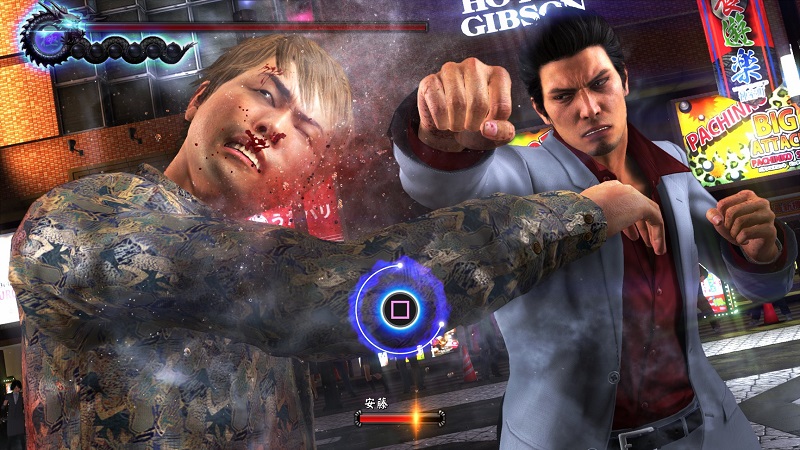
Yakuza 6 The Song of Life ended up being about a 21 hour experience for me. I did plenty of side stuff and it felt like I took my time. This run time makes the game feel much shorter than previous titles, but be aware that there was easily 10 more hours of side content for me to get into. Despite being plenty distracted there was much I did not get to see or experience, which will make going back into this world all the more of a treat! There is so much being left unsaid about Yakuza 6. The game is wrapped up in an incredible mystery that unravels like a piece of infinite yarn. I always wanted to know what happens next, and no point ever felt like a good stopping point. Yakuza 6 does the impossible and wraps up things in such a satisfying way, that I felt I got everything I could out of these characters and out of the narrative. Twelve years is a long time to stick with the same cast of characters, but no moment ever went wasted, each acting as its own puzzle piece to the greater narrative of the series. You won’t find a more consistent quality series, anywhere else in the industry.
Jen Wang is a cartoonist, author and illustrator from Los Angeles and is the creator behind Koko Be Good and co-author of the New York Times Bestselling graphic novel In Real Life with Cory Doctorow. Her latest book, The Prince and the Dressmaker, hit shelves on February 13th, 2018.
The Prince and the Dressmaker revolves around Prince Sebastian as he searches for a bride―or rather, his parents are strong arming him into finding one. However, Sebastian has a secret life: at night he puts on daring dresses and takes Paris by storm as the fabulous Lady Crystallia―the hottest fashion icon in the world capital of fashion!
Sebastian’s secret weapon (and best friend) is the brilliant dressmaker Frances―one of only two people who know the truth: sometimes this boy wears dresses. But Frances dreams of greatness, and being someone’s secret weapon means she has to stay a secret forever. It’s a romantic tale of identity, young love, art, and family.
We met up with Jen after a book signing at Emerald City Comic Con in Seattle.
LC: I wanted to talk a little bit about your protagonist and why you chose to make him exist outside of the heteronormative, cookie cutter, sort of hero. What was your reason for making him fluid?
JW: I think I just felt like…for a while I was looking for a story that would be like a positive Disney movie romantic comedy. Then I wanted to make sure it was a little more contemporary that felt a little queer. I had the idea of a character that would have this clear passion that people could relate to, even if they didn’t have a gender variant identity themselves. If you understand that Sebastian is into fashion and big dresses, that could be something anyone could relate to.
LC: You both wrote and illustrated the book, correct?
JW: Yes!
LC: Was it a conscious decision to make Sebastian unconventionally handsome compared to romcom heartthrobs?
JW: Yeah! I mean, the character is a teenager and I wanted him to look like a teenager. I didn’t want him to be super handsome or too adult looking or too sexy. Not that a teenager can’t be sexy, haha. I wanted to show the version of yourself when you’re still trying to figure out who you are. There’s a lot of recognition in a character who looks like someone you can relate to. I feel like most people seem themselves as conventional looking. The only thing I wanted to make sure to do was to give Sebastian a prominent facial feature . There’s so many costume changes; I didn’t want people to lose the character in a room full of ballgowns.
LC: How did you choose the time period for the book?
JW: The book takes place in the late 19th century and I wanted a time frame that would be sort of old-timey with people in corsets and horse drawn carriages. At the same time, I wanted there to be an emergence of technology. The 19th century had both of those things for me.
LC: Did you pull from any fashion designers as inspiration for your costume designs?
JW: I did research on clothing from the time period. I looked at a lot of historical cosplay costumers online, particularly accessories. There’s a ton of resources for that. The rest I tried to make a bit more modern like something people would wear now.
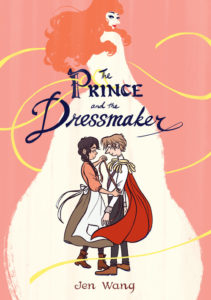 LC: Was it important for you to make the story accessible in every way, versus something that was more queer or adult?
LC: Was it important for you to make the story accessible in every way, versus something that was more queer or adult?
JW: You know, I wanted to make a book that I could read at 13 or 14. It was always the intention, I think. I didn’t really know that much at that age other than what cartoons I liked and what fantasy books I loved.
LC: When you were a teenager, were there any properties that felt accessible to you?
JW: I was really into anime and manga, which I discovered in middle school and high school. I had a friend who was Japanese who had a lot of that stuff. That was before you could find it at the library or in bookstores, haha. It’s actually how I got into comics in general. The thing that was the most influential to me was Revolutionary Girl Utena. I think you can see some overlapping themes in my stuff. It was the first thing I ever read that was queer and unabashedly feminine. I’d never read comics like that before. That was very influential to me.
LC: As someone who also got into comics through manga, I don’t think there was anywhere near the representation you see in that medium as far as the genres of stories you could experience.
JW: There was so much more aimed at teenage girls! I felt completely ignored by American publishers.
LC: I wanted to ask a little about the relationship Sebastian has with his parents. Was that something you drew from real life experiences or just something you wanted Sebastian to go through?
JW: It was something I wanted to have in the book. My parents have always been supportitve of me, but I did ultimately want his parents to accept him despite where they start off. People can change and overlook those prejudices for someone they love.
LC: Is there a comic out that you would like to recommend? Perhaps something recent that might be overlooked?
JW: I really enjoyed Spinning. It reminded so much of how it was like to be a teenager. It felt very real.
—————————————————————————————————
The Prince and the Dressmaker is available wherever graphic novels are sold near you!



